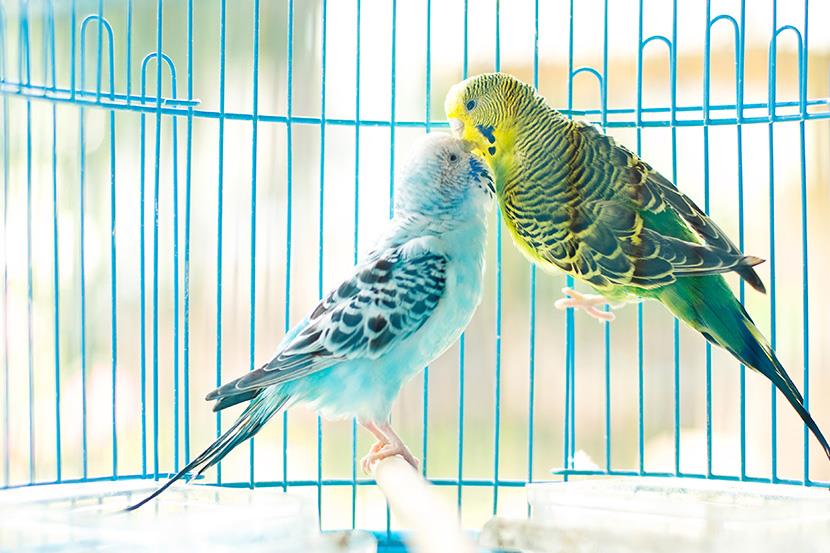Now we come to a very important article. I would like to emphasize how crucial it is to be aware how deadly this toxin is to your parrot. I have personally have friends who have lost their entire flock of parrots to one mistake – one missed pan that was not removed and used in their house and the parrots were nowhere near the kitchen.
This topic cannot be sugar coated. Please, please, remove all Teflon from your house if you have parrots.
Teflon, or polytetrafluoroethylene (PTFE), is the trademarked name for a fluorocarbon gas that is used as a non-stick coating for cookware like pans or cookie sheets, home items such as hair dryers, and other items like waterproof clothing, pizza boxes, space heaters and waffle irons to name a few.
PTFE is toxic to parrots. When used appropriately, PTFEs are relatively safe, but when temperatures exceed 382F they can create toxic fumes. The toxic agents given off by heating PTFE react with oxygen to produce carbonyl fluoride. Carbonyl fluoride is extremely toxic, and used as a military poison gas. Studies in rats have demonstrated increased exposure times and the surface area of the heated substance may play a more important role in the potency of the toxins produced compared to the actual temperature. The fumes from overheated PTFE can kill a healthy bird within minutes and smaller birds such as budgerigars are exceptionally susceptible. Overheating PTFE products happens in the blink of an eye and happens frequently.
In the 1970s, studies were performed on quail where they found that adding oil or butter to PTFE coated pans caused toxic fumes to be produced at even lower temperatures compared to heating an empty pan alone.
Birds have a unique respiratory system. Instead possessing a diaphragm like mammals, most birds have nine air sacs that act as a diaphragm allowing the intake of air. Bird lungs do not expand as in mammals, and air flows in one direction. Gas exchange still occurs in the lungs, but is much more efficient than in mammals. Oxygen and inhaled gases are inhaled in increased levels, resulting in birds being extremely sensitive to inhaled toxins like PFTE.
Signs of PTFE poisoning are seem to be focused in the respiratory tract where it is concluded that lining of the lung tissue is damaged from the acidic gases produced from overheating of PTFE. Consequently, the lungs bleed and fill with blood. Parrots may have increased respiratory effort and present with open beak breathing, and wings held away from the body. Birds may simply fall from perches. Due to lack of oxygen, parrots may suddenly convulse, be uncoordinated, or appear lethargic. Unfortunately, many parrots die seemingly without warning, even as soon as 30 minutes of exposure to toxic fumes.
There is no testing and no treatment for PTFE toxicity. If detected early enough, supportive care may help stabilize parrots. Hospitalization with oxygen support, antibiotics, and anti-inflammatory and bronchodilator drugs may be recommended. Diagnosis is based largely on history and clinical signs, which are not always very specific to this disease.
Preventing PTFE toxicity in parrots may seem simple, but removing PTFE products from the home can be challenging. PTFE and similar products can be found in certain brands of dental floss, microwave popcorn bags, irons, hair straighteners, curling wands, baking products including most parchment/grease proof paper, some light bulbs, toasted sandwich makers, waffle makers, rice cookers, plug in slow cookers, woks and drip pans in the bottom of your ovens. The best prevention is to make sure these products are used according to the manufacturer’s instructions and never allowed to overheat, and never allow your parrot near the kitchen during cooking. Removing to another room, however, may not be successful since fumes are air born.
Even safer cookware like stainless steel, copper, glass, or cast iron skillets can produce respiratory hazards to parrots if allowed for its contents to overheat or burn. Be very aware of the risk when cooking or using heated items.
In addition, other air-born products can harm or even kill your bird. We can include all airborne particles such as candle smoke, household cleaners, and air fresheners in this danger to parrots. Please limit or eliminate the use of these potential risks: Aerosols like hair spray, perfume, air fresheners, cleaning products, bug sprays. Cleaning supplies other than natural items such as toilet cleaners, and floor cleaners. Anything that burns such as aroma therapy oils and candles which emit fumes and have wicks which often contain lead.
Our house uses vinegar and lemons and baking soda for cleaning, which are very effective and are antibacterial and antiseptic as well as being cheaper than manufactured solutions.




